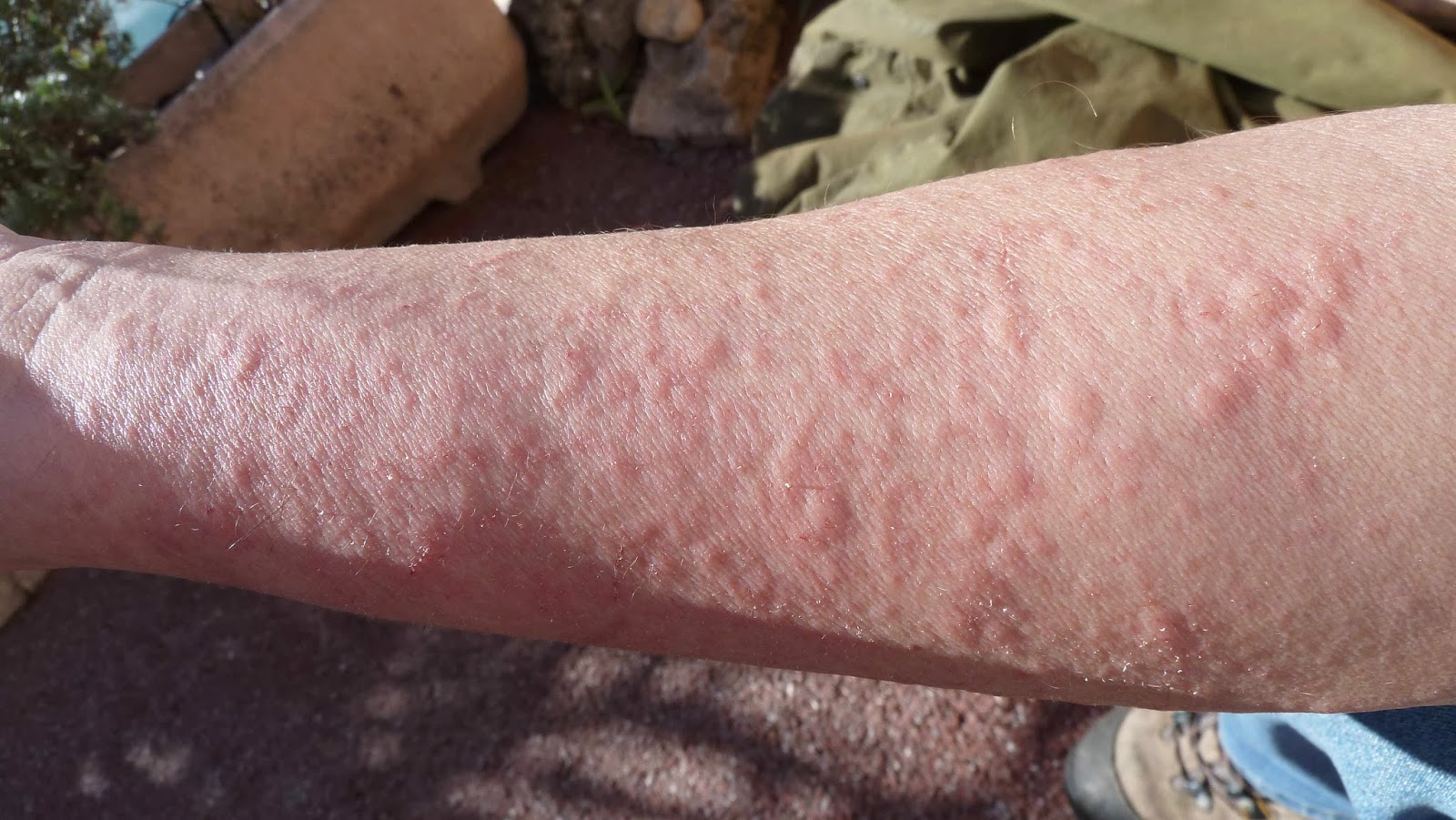Have you ever noticed tiny white bumps appearing on your arms after a day in the sun? It's a surprisingly common occurrence, and can be a little alarming. These small, raised spots can sometimes be itchy or feel rough to the touch. This article will delve into the mystery of these post-sun blemishes, exploring potential causes and what you can do about them.
Sun exposure can trigger a variety of skin reactions, and these small white bumps are just one example. They can appear on other sun-exposed areas as well, though arms seem to be a particularly common location. While often harmless, understanding what might be causing them can help you take steps to minimize their appearance.
One possible culprit behind these small white bumps is a condition called heat rash, also known as prickly heat or miliaria. This occurs when sweat ducts become blocked, trapping perspiration beneath the skin. The trapped sweat can cause small, itchy bumps, which can sometimes appear white. Heat rash is more common in hot, humid weather, and it's often exacerbated by sun exposure.
Another possibility is a reaction called polymorphic light eruption (PLE), a common skin rash triggered by sun exposure. PLE can manifest in various ways, including small, raised bumps that may be itchy or burning. While the exact cause of PLE isn't fully understood, it's thought to be an immune system response to sunlight. The rash typically appears within hours or days of sun exposure.
Finally, in some cases, the white bumps could be a type of sun allergy. Sun allergies are less common than heat rash or PLE, but they can cause similar symptoms, including small, itchy bumps or blisters. If you suspect you might have a sun allergy, it's important to consult a dermatologist for diagnosis and treatment.
Managing these post-sun bumps often involves simple steps like cooling the affected area with a cool compress or taking a cool shower. Avoiding further sun exposure is crucial to prevent the condition from worsening. Over-the-counter hydrocortisone cream can help reduce itching and inflammation. If the bumps are persistent, painful, or accompanied by other symptoms like fever or chills, it's always best to seek medical advice.
Preventing these bumps involves protecting your skin from excessive sun exposure. Always apply a broad-spectrum sunscreen with an SPF of 30 or higher before going outdoors, even on cloudy days. Wearing protective clothing, like long-sleeved shirts and wide-brimmed hats, can also help shield your skin from the sun's rays.
Advantages and Disadvantages of Understanding White Bumps
| Advantages | Disadvantages |
|---|---|
| Empowered to take preventative measures | May cause unnecessary anxiety if bumps are harmless |
| Early identification of potential skin issues | Can be time-consuming to research and understand |
Frequently Asked Questions
1. Are white bumps after sun exposure always a cause for concern? Not usually. Many are benign and resolve on their own. However, consult a doctor if they are painful or persistent.
2. Can I still go in the sun if I have white bumps? It's best to avoid further sun exposure until the bumps clear up.
3. How long do these bumps typically last? They usually fade within a few days to a week.
4. Are certain people more prone to these bumps? Those with sensitive skin or a history of skin reactions might be more susceptible.
5. Can I prevent these bumps from appearing? Protecting your skin from excessive sun exposure is the best prevention.
6. What should I do if the bumps are itchy? A cool compress or over-the-counter hydrocortisone cream can help.
7. Can these bumps be a sign of something serious? While typically harmless, consult a doctor if you're concerned.
8. Should I see a dermatologist? If the bumps are persistent, painful, or accompanied by other symptoms, seeking professional advice is recommended.
Tips and Tricks: Stay hydrated, wear loose-fitting clothing in hot weather, and consider taking cool showers after sun exposure.
In conclusion, the appearance of small white bumps on your arms after sun exposure is a common experience. While they can be a bit unsettling, understanding the potential causes and taking preventative measures can help minimize their occurrence. Protecting your skin from excessive sun exposure with sunscreen and protective clothing is key. Staying hydrated and keeping cool can also be beneficial. If you're ever unsure about the nature of your skin reaction or experience persistent or concerning symptoms, consulting a dermatologist is always the best course of action. Remember, taking care of your skin is an important part of overall health and well-being, so listen to your body and seek professional advice when needed. This knowledge empowers you to take proactive steps in protecting your skin and enjoying the sun safely.
PMLE Sun Allergy Rash Pictures - The Brass Coq
White Spots on Skin from Sun Causes Pictures Treatment - The Brass Coq
Sun Rash What to Know About Photosensitivity - The Brass Coq
Itchy Rash With White Bumps at Gerald Lu blog - The Brass Coq
White Bumps on Skin itchy Small Dots on Arms Face Legs after Sun - The Brass Coq
Itchy Legs After Shower During Pregnancy at David Rowen blog - The Brass Coq
Lupus Rash on Legs - The Brass Coq
Yes Sun Allergies Are Real And Heres How To Know If You Have One - The Brass Coq
Cholinergic urticaria Symptoms treatment and causes - The Brass Coq
Sun Bumps On Arms - The Brass Coq
Can You Get Rashes From Not Showering at Elizabeth Starling blog - The Brass Coq
What Does Sun Allergy Rash Look Like See These Pictures - The Brass Coq
Sun Rash On Arms - The Brass Coq
Red Bumps On Upper Arms - The Brass Coq
Can A Tanning Bed Cause Hives at Charles Chatman blog - The Brass Coq













